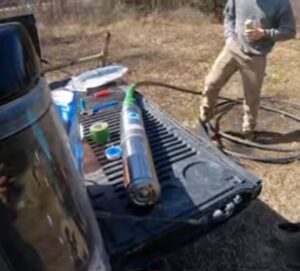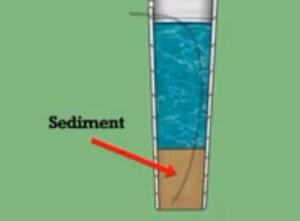Solutions to Fix a Dry Well
1. General Inspection – Get your well inspected for any damages. A general inspection includes checking the well pump and screen, pressure tank, water treatment units, and the entire plumbing system.
2. Water Pump Placement – Lower the water pump as water level inside the pump can reduce after some years. Your well contractor will do this for you. This solution is best for submersible and deep well pumps.
Read more: How to Prime a Well Water Pump?

3. Fracking the Well – Hydrofracking uses a high-pressure water stream to remove sediment buildup on aquifer and make more cracks on aquifer’s surface. It also increase the flow rate and well replenishment rate.
4. Deepening the Well – You can deepen the well if the above fixes don’t work. It may cost you a lot so it must be preferred as a last solution.
5. Digging a New Well – The final fix is to dig a new well. Make sure you hire a licensed contractor to dig a new well at your property. The abandoned well must be sealed properly before digging a new well.
Which factors govern the water level in the well?
- Well depth
- Type of aquifer from which water is coming
- The volume of water pumped from the well
- Number of wells in the surrounding areas
- Permeability and porosity of the underground rocks
- Amount of recharge occurring from precipitation or artificial recharge
Reasons behind a Dry Well
Mechanical Problems: Issues with well pump, storage tank, plumbing pipes, water filters, and/or softeners can reduce the flow rate. You may think that the well has gone dry but it is due to mechanical problems. 
Sediment Buildup: – Sediment and mineral build-up at well screen may reduce flow of water to your well.
Withdrawal Volume: You may be pumping more water than your well can handle. Some wells don’t get enough time to replenish because of continuous pumping. These problems usually happen after you fill a swimming pool with well water.
Complete Dry-Up: Water wells last for 10-20 years. Your well may go dry because it has completed is life. There is no water left in the aquifer to refill your well. A well can also go dry due to environmental factors such as low rainfall, drought and climate change.
Symptoms of a Dry Well
- Muddy or murky water
- Change in taste
- Coughing and sputtering taps
- Reduced flow rate
- The water pump runs longer
- It may malfunction frequently
- Neighbors report the same problem
Final Words
You must never hire a water tanker to fill the water from outside; it can damage the well pump, casing, and other equipment. The average age of a well is 10-20 years; you may need to relocate the well after this time. So, if your well is reaching its maturity age, it is best to start considering digging a new well.
